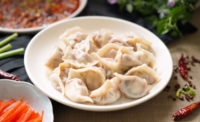How to Deliver Fresh, Frozen Proteins to Chinese Consumers

China presents a great opportunity for U.S. producers who can tap into the rising consumer need for increased protein in their diet. Chinese consumers already eat double the amount of meat as their American counterparts each year, and with food safety scares continuing to be a problem, they are increasingly seeking and spending more on safe, high-quality food sources.
Though restrictions exist on beef and poultry, there are also significant non-animal protein opportunities for U.S. producers in other fresh and frozen markets. For example, U.S. dairy exports capitalized on China’s increased consumption of proteins by growing over 30% in 2013. However, supplying the world’s second largest economy with both animal and non-animal proteins requires careful planning and a deep understanding of the consumer and the associated route-to-market challenges.
Understanding China’s protein preferences
Understanding how the end-user prefers to consume any import is essential in China market entry, as consumption preferences can differ greatly. Though exporting beef to China is currently banned due to the BSE outbreak from 2003, the good news is that Chinese consumers actually favor pork to beef. Plus, pork sells for twice the price of beef, per live weight pound. U.S. consumers also prefer lean muscle cuts, while Chinese consumers purchase a lot of pig ears, tails and offal, which can retail for twice the price of American cuts. This presents a significant opportunity for U.S. producers to generate value from the entire pig, with Chinese and American consumption preferences complimenting each other.
In terms of non-animal proteins, the likes of Canada are also taking advantage of rising demand. In March alone, China imported 450,000 tons of high-protein wheat (300,000 from Canada and 150,000 from Australia), tapping into China’s aforementioned need for increased protein and the country’s newfound consumption of bread. New Western-style bakeries sell sweets, but they also offer savory, pork-flavored treats. Products include “pork bread” or even “crouching tiger, hidden bacon.”
Jen Pino Gallagher, director for the Wisconsin Department of Agriculture, Madison, Wis., notes in the Wisconsin State Journal that the United States has a potential opportunity in taking advantage of China’s thriving dairy industry. Milk consumption is 50 times less (per capita) than in the United States, as recently as 2003. Mengniu, what is said to be China’s largest dairy processor, was only established in 1999, but experiences an increase in sales at a rate of 20% annually (with a net profit of over $300 million in 2014). This is partly thanks to the Chinese government now encouraging consumers to drink a glass of milk each day. Plus, foreign companies, particularly those from Australia and New Zealand, have entered the competitive marketspace. In May 2014, a shipment of 750,000 tons of imported milk sold out online in under an hour.
Gallagher also states that last year, Wisconsin exported approximately $55 million of whey to China to be used in processed foods and powdered milk. Due to food scares and a lack of distribution capabilities, fresh milk is uncommon in China and the majority of milk is ultra-heat treated to extend shelf life. In 2014, China imported over 884,000 tons of milk powder, with domestic milk simply being poured down the drain.
The key point here is that it’s essential for U.S. producers to research the market for both fresh and frozen proteins to understand how Chinese consumers are going to use the product and in what format.
Form effective partnerships to ensure delivery
Understanding the logistical implications of exporting fresh and frozen proteins to China is also crucial to ensure time and money is spent efficiently.
Food safety remains a top-of-mind concern for Chinese consumers, and with food scares such as protein adulteration in the supply chain, any breaches of trust can tarnish the brand. However, there are still issues in cold supply chain capabilities, with China having fewer cold distribution trucks than India. Some estimates place spoilage rates of perishable goods as high as 40%. That said, there are innovators in this sector who are looking to cash in on consumer needs for fresh, safe and high-quality foods. T-Mall (an online retailer in China) now delivers Vietnamese fruit, Australian steak and Canadian cod straight to the consumers’ door, and is investing $16 million into logistics providers to improve its solutions.
The retail environment is fierce with international competition. Premium imported goods that go out of style can soon become heavily discounted and left at the bottom of the shelf. China market entry strategy should therefore include retail capabilities that ensure the quality of the product is easily articulated and shared with the consumer. Provenance matters, too. In response to the Chinese concerns for food safety and the Chinese tendency of luxurious gift giving, packages can now be scanned with a smartphone for the consumer to learn more about a product’s origin. An understanding of the retail environment is essential to stay ahead of the curve when it comes to imported proteins. By using subtle brand narratives and product tracking to communicate the likes of fresh air and technological expertise in protein production, high-end producers can charge a premium.
Summary
U.S. pork exports have increased 1,550% since 1989, with the likes of Mexico, Japan and Canada fuelling the growth for what is now the world’s largest pork exporter. But, with the world’s largest consumer of pork questioning their domestic consumption options, this highlights the opportunity for U.S. producers to export high-quality products for China’s growing middle class. With the boom in China’s dairy industry, there are opportunities for a range of frozen and chilled goods. That said, cold food processors must maintain a deep market understanding in order to stand out and be successful in China.
Looking for a reprint of this article?
From high-res PDFs to custom plaques, order your copy today!









